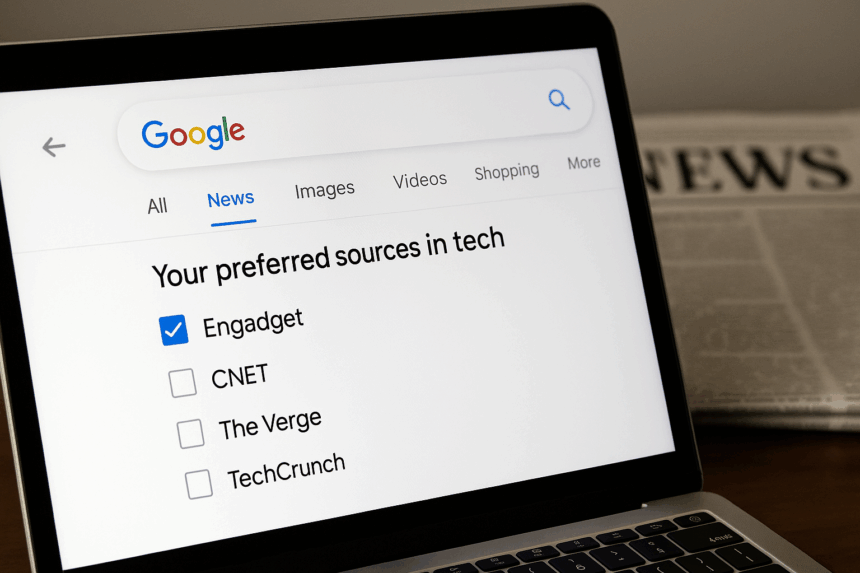Google now lets users take control of their Top Stories feed with the new Google Preferred Sources feature. The feature allows people to mark their preferred news outlets. As a result, articles from those sources appear more prominently in search results. The feature gives users more control over where their news comes from. Simultaneously, other perspectives remain visible.
What’s Happening & Why This Matters
Google is rolling out a Preferred Sources option in the U.S. and India. There are plans to expand to more regions soon. Once set, stories from chosen outlets appear either higher in the Top Stories block or a dedicated From your sources section beneath it.
To add a source, users can search for a trending topic on Google and click the icon of two overlapping cards with a star. Then, they select their favorite outlets by name or URL. Results reload instantly, and users can add or remove sources at any time. Google says you can add as many as you like.

Google began testing the tool in Labs back in June. During that trial, more than half of the participants saved four or more sources. The company continues integrating AI features into Search. These changes have drawn criticism from some publishers over reduced traffic. Google maintains that AI in Search is driving more queries and higher quality clicks. However, it has not disclosed which publishers see those benefits.
For news organisations, the feature offers a new way to strengthen relationships with readers. Google provides publishers with direct linking tools and buttons they can place on their sites. This makes it easier for visitors to set them as a preferred source.
Watchers say the AI feature improves how readers engage with online news. By making it easier to see stories from trusted outlets, users may bypass unfamiliar or low-quality sources. However, critics warn it creates echo chambers if people limit themselves to a narrow set of perspectives.
TF Summary: What’s Next
Google’s Preferred Sources feature puts more news selection power in the hands of users. It creates a new promotional tool for publishers seeking loyal readership in a competitive digital news space. As rollout expands beyond the U.S. and India, it may become a critical lever for outlets wanting to retain visibility in Google Search.
For readers, the change could mean faster access to trusted sources — but it also makes media literacy even more important. Personalising your news feed can be powerful, but keeping diverse viewpoints in the mix remains key.
— Text-to-Speech (TTS) provided by gspeech


